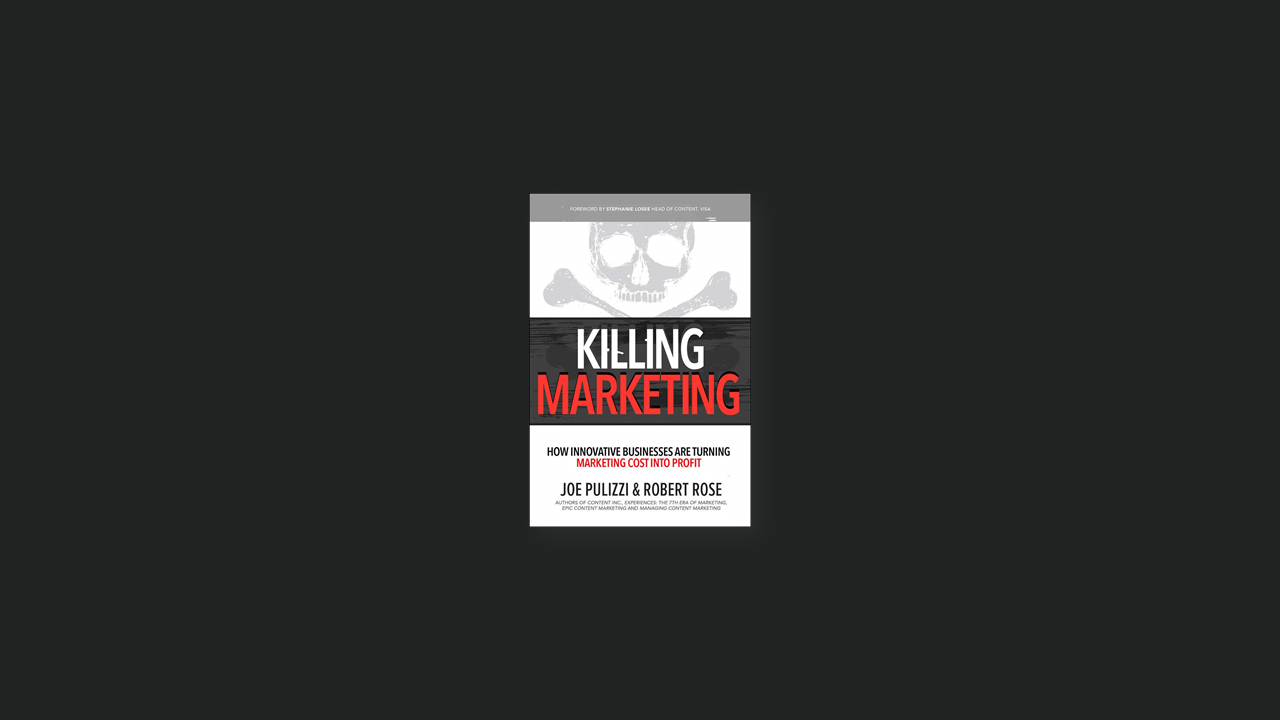Killing marketing
Most companies don’t fail because they’re wrong; they fail because they don’t commit themselves. The greatest danger is standing still. – Andy Grove, CEO of Intel
To be clear, the purpose of marketing hasn’t changed at all. It’s still to create and keep a customer, as Peter Drucker famously said. Creating a customer is more than simply persuading someone who’s interested in buying it. It’s more like creating a customer, from nothing.
Marketers make markets and today our opportunity is to create an interested audience out of thin air and keep them hooked until they purchase from us.
Return on audience
That was the moment I gave up on decision analysis. No one ever made a decision because of a number. They need a story. – Daniel Kahneman
Keeping track of marketing activities has not gotten any easier. More data has not (always) enabled us to be more accurate with our measurements. But looking at measurement as a means of monitoring our marketing activities is achievable.
Audiences can provide campaign value, enabling smarter marketing moves. They also provide for competency value, enabling data acquisition and smarter business moves. Then they provide customer value, allowing more loyal customers who’ll further advocate our brand. Of course, they also provide cash value, enabling us to make marketing a profitable venture.
Media marketing
My model for business is The Beatles: They were four guys that kept each other’s negative tendencies in check; they balanced each other. And the ottal was greater than the sum of the parts. – Steve Jobs
Whether you’re a large multinational corporation like Red Bull, Coca Cola or a small local startup, the same business model applies – to build a loyal audience and as many direct revenue streams as possible.
When you build a loyal audience online, remember it’s not about how often you publish or how much for that matter. It’s about creating a phenomenal content that emotionally connects with the audience.
The revenue model
Once a loyal community has been built, a company can leverage direct access to an audience. There are 10 discrete ways to monetize from the existing fanbase.
- Products
- Services
- Subscriptions
- Advertising/sponsorships
- Conference/events
- Premium content
- Donations
- Recurring customers
- Yield increase
- Cross-sales
In general, companies start by leveraging one specific revenue source from a particular audience, and then once that matures, the companies begin to diversify their portfolio into other areas.
Traditionally, media companies leverage direct revenue resources, while brands that sell products and services generate indirect sources of revenue. In the future, the majority of both media and non-media companies will use the same model and generate both types of revenue.
The marketing media savings model
In many companies, technology is driving their marketing strategy, when it should be the other way around. A chase to efficiency using technology is a zero sum game. The exponential savings in marketing come from being able to easily reach customers and finding more efficient ways to reach ones we don’t.
Companies can cut back sales costs by using content as a way to help sales. They can drive down traditional advertising costs by using audience data to more accurately target those who are more likely to buy. If that isn’t enough, they can create better customers by slowing down the process of engagement and better educating them.
But wait.. There’s more. Companies can decrease product and research costs by developing audiences who willingly tell them what they want in the marketplace. Above all, they can become more profitable if they keep looking at media models that develop multiple lines of value at a higher margin.
The road to killing marketing
The first step to killing marketing is to stop looking at attracting customers through every step of their buyer journey. Instead, simply create remarkable experiences at selective stops. The use of data must have an emotional component to it. Data has no meaning, other than a collection of facts and statistics. But if we look at data through an emotional lens, we can take a big leap making data we collect much more valuable.
Second, stop putting too much focus on moving fast. Marketing professionals are already moving at breakneck speed. It’s time to take a deep breath, slow down and focus on creating processes that help us in an agile way, not necessarily fast. It’s about looking to move, adapt and pivot quickly rather than sprinting with no end in sight.
One media model
Before you ever start to create and publish content, you need to make sure you have the right audience. That is where the greatest media companies start. They focus on one core audience leaving one main platform.
Next, all subscribers and followers are not created equal. Even though social media connections are valuable, they should not be considered as valuable as email or print subscribes where you have more control over data.
What now…
The primary lesson we learnt from Zappos was that it wants to be a 100-year old company. In its leader’s mind, that may mean something very different in 100 years than what we think of Zappos today. The biggest lesson we learnt from Schneider Electric was delivering quality, focusing on continual excellence and resisting the urge to expand just because you can.
If audiences truly value the communication you’re having with them, they’re willing to pay for it. As Pilar Geraismo from Experience Life said, “We believed that people would be more angry if they stopped receiving the magazine, rather than discovering that they were paying a dollar for it.” It turns out she was right.
Killing the marketing we now will be very different for the 100-year-old enterprise than it will for the 1-year-old startup. The one though-line every successful company is the willingness to try. Every successful company recognizes that marketing of today isn’t enough and that business must fundamentally evolve if it’s to thrive.

